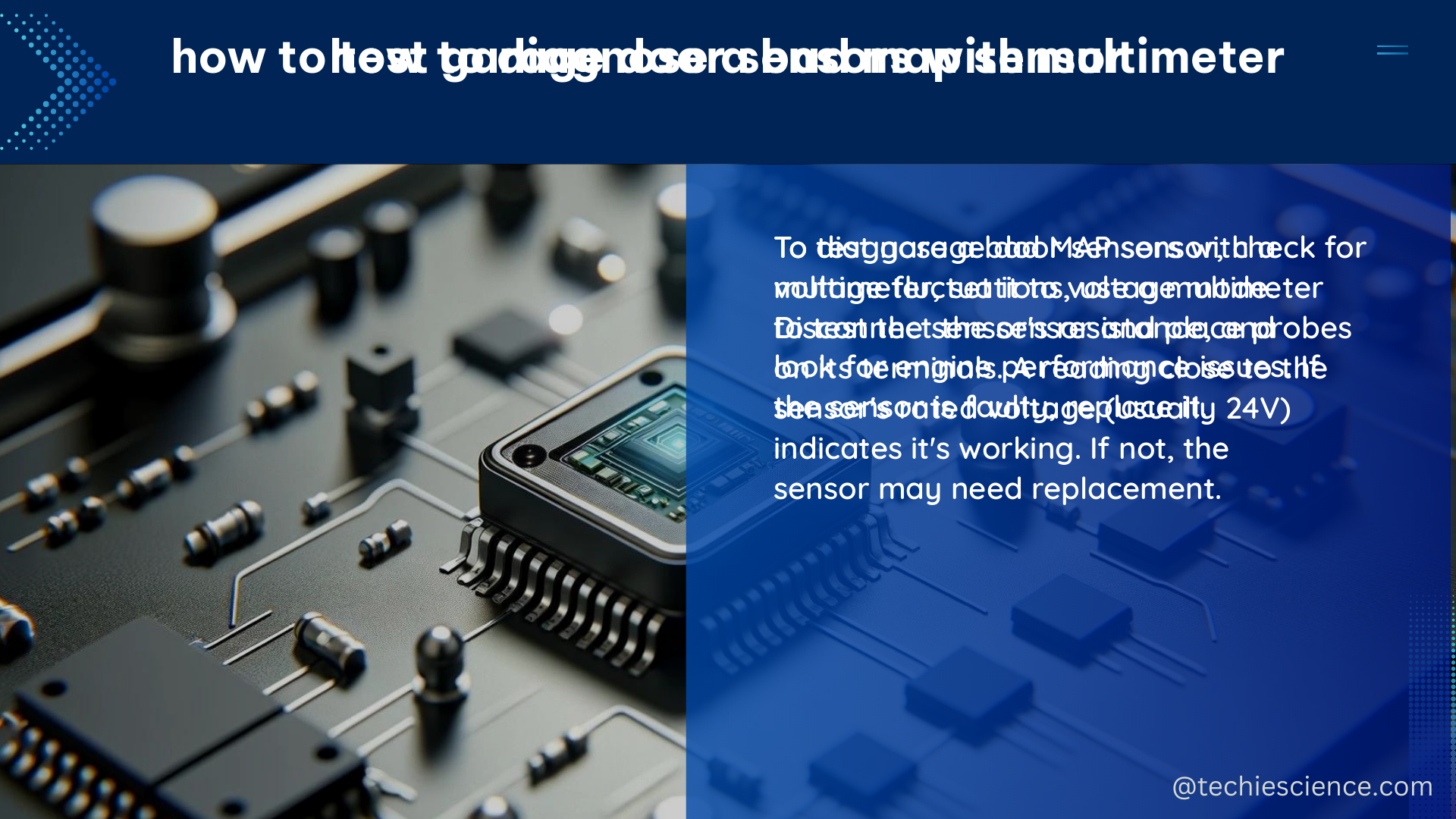The Mass Air Flow (MAF) sensor, also known as the map sensor, is a critical component in your vehicle’s engine management system. It measures the amount of air entering the engine, which is essential for the engine control unit (ECU) to determine the correct fuel-to-air ratio for optimal engine performance and efficiency. When the MAF sensor fails, it can lead to a range of issues, including poor fuel economy, reduced power, and even engine stalling. In this comprehensive guide, we’ll walk you through the step-by-step process of diagnosing a bad map sensor.
Checking the Engine Light
The first step in diagnosing a bad map sensor is to check if the check engine light is illuminated on your vehicle’s dashboard. A faulty MAF sensor can trigger the check engine light, and the specific error code related to the MAF sensor can be retrieved using an OBD-II scanner. Common error codes associated with a bad map sensor include P0100, P0101, P0102, and P0103.
Performing a Visual Inspection

Next, you’ll want to visually inspect the MAF sensor for any signs of damage, such as cracks, corrosion, or contamination. A dirty or damaged sensor can lead to incorrect readings, so it’s essential to ensure the sensor is clean and in good condition. Use a soft-bristle brush or compressed air to gently clean the sensor, taking care not to damage the delicate components.
Checking the MAF Sensor Voltage
Using a multimeter, you can check the voltage output of the MAF sensor. A healthy MAF sensor should produce a voltage between 0.5 to 4.5 volts, depending on the airflow rate. If the voltage reading is significantly outside of this range, it may indicate a faulty sensor.
To perform this test, follow these steps:
- Locate the MAF sensor in your vehicle, typically near the air intake or engine.
- Disconnect the MAF sensor connector and set your multimeter to measure voltage.
- Connect the positive (red) lead of the multimeter to the signal wire of the MAF sensor connector, and the negative (black) lead to the ground wire.
- Start the engine and observe the voltage reading. The voltage should fluctuate as the engine speed and airflow change.
- Compare the voltage readings to the manufacturer’s specifications. If the readings are outside the expected range, the MAF sensor may be faulty.
Measuring the MAF Sensor Resistance
In addition to checking the voltage, you can also measure the resistance of the MAF sensor using a multimeter. The resistance should be within the manufacturer’s specified range, which is typically between 5 to 20 ohms. A significant deviation from this range may indicate a problem with the sensor.
To measure the resistance, follow these steps:
- Locate the MAF sensor and disconnect the connector.
- Set your multimeter to measure resistance (ohms).
- Connect the positive (red) lead of the multimeter to one of the sensor’s terminals, and the negative (black) lead to the other terminal.
- Compare the resistance reading to the manufacturer’s specifications. If the resistance is outside the expected range, the MAF sensor may need to be replaced.
Performing a MAF Sensor Calibration
Some vehicles allow you to perform a MAF sensor calibration using a scan tool. This process involves driving the vehicle at specific speeds and RPMs to recalibrate the MAF sensor. This can help correct any inaccuracies in the sensor’s readings and improve engine performance.
To perform a MAF sensor calibration, you’ll need a compatible scan tool and follow the manufacturer’s instructions for your specific vehicle. This may involve driving the vehicle at a constant speed, accelerating to a certain RPM, or other specific driving patterns.
Replacing the MAF Sensor
If the MAF sensor is damaged or cannot be calibrated, it may need to be replaced. When replacing the sensor, make sure to use a part that is compatible with your vehicle’s make, model, and year. Refer to your vehicle’s service manual or consult with a professional mechanic to ensure you get the correct replacement part.
When installing the new MAF sensor, be careful not to damage the delicate components. Follow the manufacturer’s instructions for proper installation and ensure all connections are secure. After replacing the sensor, clear any diagnostic trouble codes and test the vehicle’s performance to ensure the new sensor is functioning correctly.
Conclusion
Diagnosing a bad map sensor requires a systematic approach, including checking the engine light, performing a visual inspection, measuring voltage and resistance, and potentially calibrating the sensor. By following these steps, you can accurately identify and address any issues with your vehicle’s MAF sensor, ensuring optimal engine performance and fuel efficiency.
Remember, if you’re not comfortable performing these diagnostic tests or replacing the sensor yourself, it’s always best to consult with a professional mechanic to ensure the job is done correctly and safely.
References:
- “Digital Habit Evidence – Duke Law Scholarship Repository.” https://scholarship.law.duke.edu/cgi/viewcontent.cgi?article=4144&context=dlj
- “arXiv:2209.02439v5 [stat.ME] 25 Sep 2023.” https://arxiv.org/pdf/2209.02439
- “Inter-rater Reliability: Definition, Examples, Calculation – Encord.” https://encord.com/blog/inter-rater-reliability/

The lambdageeks.com Core SME Team is a group of experienced subject matter experts from diverse scientific and technical fields including Physics, Chemistry, Technology,Electronics & Electrical Engineering, Automotive, Mechanical Engineering. Our team collaborates to create high-quality, well-researched articles on a wide range of science and technology topics for the lambdageeks.com website.
All Our Senior SME are having more than 7 Years of experience in the respective fields . They are either Working Industry Professionals or assocaited With different Universities. Refer Our Authors Page to get to know About our Core SMEs.